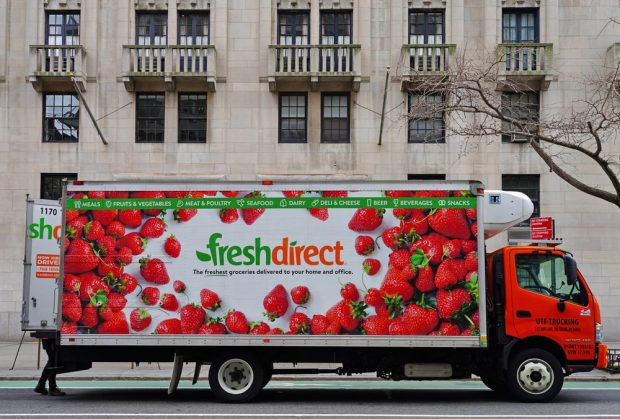Record-Breaking Holiday for Online Grocery Shopping Holds New Year Clues

This year, Ahold Delhaize is seeing holiday shoppers flock to online grocery like never before.
The U.S. arm of the grocer, which encompasses thousands of stores across brands such as Giant, Food Lion and Stop & Shop as well as digital brands Peapod and FreshDirect, is seeing an increase in consumers’ expectations of digital convenience when it comes to holiday season purchasing.
“We’re also a strong engagement on ecommerce,” Rom Kosla, executive vice president, information technology and chief information officer for Ahold Delhaize USA’s services company, Retail Business Services, said in an interview with PYMNTS. “From a technology standpoint, we have a fairly robust trend tracker of all transactions are coming through, and it’s highest we’ve seen — at least, during Thanksgiving it was the highest number of transactions — since all the previous holidays.”
He added that the company expects these trends to be the same for the December holidays.
This spike in digital engagement can be key for the grocer, boosting the adoption of eCommerce channels and, in turn, ushering consumers into the company’s connected ecosystem. Through these platforms, the grocer can gather customers’ data and consequently market to those shoppers more effectively in the future.
Kosla noted that in-store sales have also been strong during the season in addition to this digital growth.
Indeed, PYMNTS research reflects that consumers are shifting their spending toward groceries and away from discretionary items over the holidays, as revealed in the study “New Reality Check: The Paycheck-to-Paycheck Report: Holiday Shopping Edition,” created in collaboration with LendingClub. The report, which draws from a survey of more than 3,400 U.S. consumers, found that, while many shoppers are cutting back on gift purchasing, few said the same of grocery spending.
Specifically, while 26% of consumers are reining in their retail purchasing and 29% their restaurant spending, only 17% said the same about grocery shopping. Conversely, more than twice that share — 38%— reported that they would be spending more on groceries this holiday season.
Moreover, Research from the latest edition of PYMNTS’ Digital Divide study, “The 2022 Restaurant Digital Divide: Restaurant Customers React to Rising Costs, Declining Service,” which drew from a survey of 2,378 U.S. restaurant patrons, found that a third of all diners are purchasing from restaurants less often. This reduction in dining out poses an opportunity for grocers to gain share.
Granted, part of the engagement may just come from the fact that groceries are a daily need, and as such, even the most staunchly belt-tightening consumers cannot skip them altogether (even if they can make adjustments).
Sixty-one percent of consumers purchased almost exclusively essential daily items like gas, health products and food in March, according to the April edition of PYMNTS’ ConnectedEconomy Monthly Report, which is based on a survey of roughly 2,500 U.S. consumers. Since then, inflation has only risen, prompting more consumers to stick to the basics and, in turn, to weigh their spending more heavily towards grocers.
In addition to this shift away from discretionary purchases toward grocery, Kosla theorizes some of the “strong sales” across digital and physical channels this season comes from the return of large gatherings. (Last December, after all, was during the COVID Omicron spike, and the year prior was, of course, 2020.)
“People are coming together for the holidays more so than the prior years, and maybe there’s more celebrations around that point,” Kosla said. “[This strong performance] was something that we expected to see, but not maybe at this volume.”
